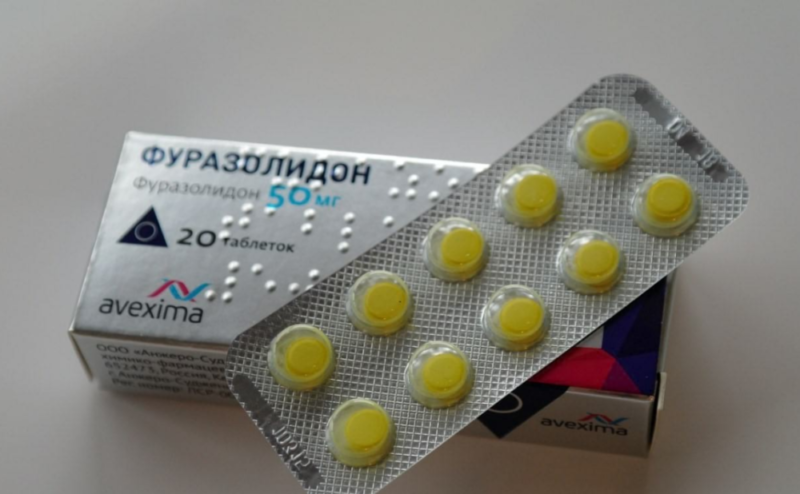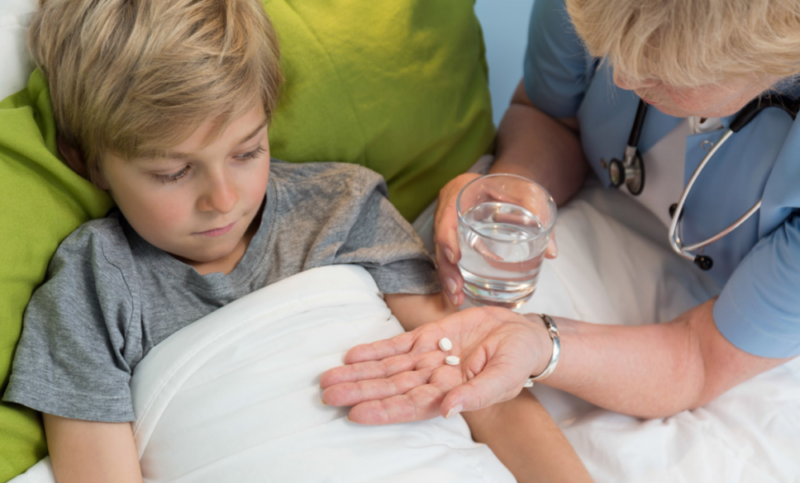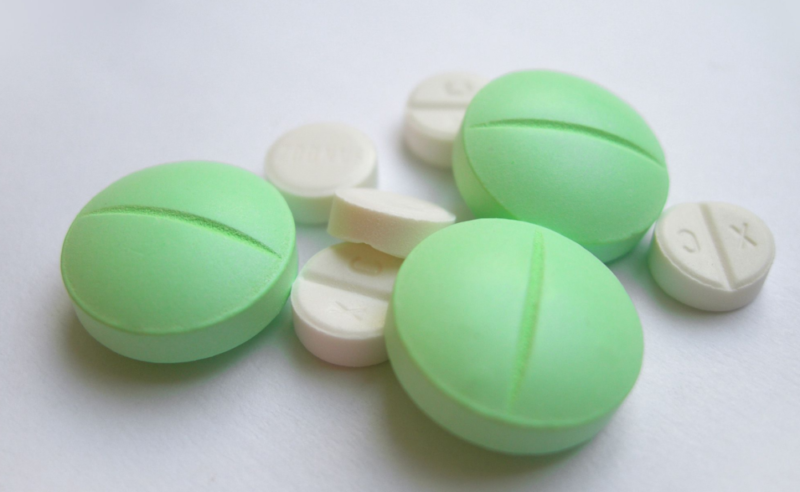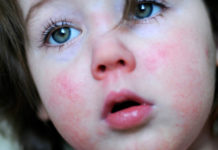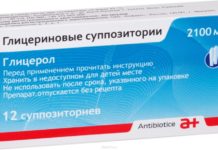Digestive infections are more common in younger patients. But with the appointment of Furazolidone, children should pay special attention to the dosage and contraindications. If they are not observed, taking the drug may not have a positive effect, but a negative one.
Material Content:
The composition (active substance) of the drug
The medicine is available in tablets. In 1 pc contains 50 mg of furazolidone. Inside the package are 10 tablets, which is enough to treat a mild form of intestinal infection. For longer therapy, the purchase of several packs is required, but this is not a problem for patients due to the low price of the drug.
Therapeutic properties
Furazolidone tablets act as an intestinal antiseptic and are included in the group of drugs with an antibacterial effect. The activity of the drug also extends to some protozoa. But you need to remember that microbes can be resistant to the drug.
Attention! Before starting therapy, it is recommended to determine the sensitivity of the microorganism to the drug by conducting a special analysis.
The therapeutic effect is due to the interaction of the drug with the microbial flavoproteins, as a result of which the active component passes into the active form. It destroys the proteins of the ribosomes of the cell and some large molecules, due to which the pathogen dies. The package contains 10 tablets, which is enough to treat a mild form of intestinal infection.
Why are pills prescribed?
The instructions for use of the drug indicate a list of diseases in which Furazolidone has a pronounced therapeutic effect.
These include:
- paratyphoid of any type;
- gastroenteritis and diarrhea caused by bacteria;
- giardiasis;
- typhoid fever;
- dysentery;
- foodborne infection with an unknown pathogen.
Due to the limited spectrum of action, the drug does not have a wide list of pathologies against which it can be used. But in some cases, it can save a life.
Therefore, it is not worth underestimating this antimicrobial agent.
Instructions for use furazolidona for children
The dosage of furazolidone depends on the age of the patient. Before reaching 14 years of age, children are prescribed 30-50 mg of the drug at a time. For adults, this amount increases to 100-150 mg at a time.
The medicine is intended for oral use. It is used 4 times a day with a maximum daily amount of the active component of 800 mg. The course of treatment lasts from 5 to 10 days. Individually, therapy can be extended, but this should only be done under the supervision of a specialist. Sometimes the lack of a therapeutic effect within the specified time indicates that the drug is not suitable and requires replacement with a similar one.
Interaction with other medicines
The drug does not have a systemic effect on the body. It acts within the gastrointestinal tract and exclusively on pathogens. Therefore, a noticeable interaction with other drugs does not occur.
Furazolidone can be used in conjunction with probiotics. So the elimination of unpleasant symptoms of the disease will happen faster. The dosage of drugs with complex treatment can not be changed, since they act in one direction, but do not affect each other.
Contraindications, side effects and overdose
The medicine is not used in the presence of hypersensitivity to the active substance.
Treatment with the drug can provoke some side effects:
- bouts of nausea;
- allergic manifestations;
- sudden weight loss;
- vomiting.
If one of the signs appears, you must seek the advice of a specialist. Reducing dosage can help remove unpleasant symptoms. If there is no positive effect, the doctor selects a similar remedy to end the treatment. It should correspond not only to the age of the patient, but also to his diagnosis, as well as his state of health. Furazolidone is approved for use in the youngest children, it can be difficult to find a replacement
Analogs of intestinal antiseptic
In some cases, the use of furazolidone is not possible. Then appoint one of its analogues. But the drug is completely identical in composition. Therefore, it is necessary to take into account the diagnosis, age and condition of the patient in order to choose an adequate replacement for the original product.
The most popular drugs with similar properties can be considered:
- Macmirror - available in the form of white tablets in a shell of 20 pcs. in the package (2 blisters of 10 tablets), contains 200 mg of nifuratel, which belongs to nitrofurans and acts as an antimycotic, antiprotozoal and antibiotic (does not help against dysentery);
- Enterofuril - has 2 forms of release: yellow or brown capsules with nifuroxazide 100 and 200 mg each and a suspension in 5 ml of which contains 200 mg of the active ingredient acting as an antimicrobial drug (not used in children up to 1 month in the form of a solution or younger 3 years for capsules);
- Nifural - synthesized in the form of capsules with 100 or 200 mg of nifuroxazide, which is part of the nitrofuran group, effective against campylobacteria, E. coli, Shigella, Salmonella, clostridia, cholera vibrio, hemolytic bacteria, staphylococci, prevents the attachment of superinfection during viral etiology of the disease (not used children under 3 years old);
- Furamag - contains furazidine, which has bacteriostatic and antiprotozoal effects, therefore it helps against infections of the digestive and reproductive systems, as well as the skin, is used for massive burns and as a prophylaxis for complications of surgical treatment;
- Nifuroxazide is the safest analogue allowed for pregnant and lactating women, as well as children of any age, acts against salmonellosis, escherichiosis, shigellosis, cholera, is used as a preventive measure before surgical interventions (does not affect the causative agent of dysentery);
- Furagin - similar in effect to Furazolidone, but has a large list of contraindications, is most often used to treat organs of the excretory system and requires constant analysis of the concentration of leukocytes in order to prevent serious side effects;
- Chloramphenicol is an antibiotic used for typhoid fever, infection of the genitourinary system, dysentery, pneumonia, otitis media, eye diseases, meningitis, but with serious side effects with long-term treatment;
- Furadonin - suitable for the treatment of infectious diseases of the digestive and excretory systems, but causes side effects in the form of rashes, headaches, nausea, coughing, nervousness and fatigue (not suitable for children up to 1 month old);
- Enterol - has a similar effect, but the opposite effect: - it helps the normal intestinal microflora to multiply and colonize it when the balance is disturbed, as a result, diarrhea provoked by a virus or bacteria stops, dysbacteriosis and enterocolitis disappears, and symptoms of irritable bowel syndrome are relieved;
- Phthalazole is available in the form of tablets, has a wide range of sensitive microorganisms, helps against enterocolitis, dysentery, ulcerative colitis, foodborne toxicoinfections, enterocolitis, gastroenteritis, diarrhea due to infection of the gastrointestinal tract, chronic gastritis and is used as a prevention of complications of surgical treatment (not prescribed with intestinal obstruction and acute hepatitis).
Analogs of Furazolidone differ in composition from the original means. They are able to have a similar effect, but do not fully replace the drug. Therefore, for each patient, it is required to select a medicine individually, given its age, diagnosis and state of health.
Furazolidone is one of the drugs acting against dysentery. This disease carries a mortal danger to humans, and therefore requires effective treatment. The drug has a reasonable price, which makes it affordable for all segments of the population. Laconic composition minimizes the risk of side effects. This is especially important when treating children.
The medicine is well suited for the treatment of infections of the digestive system, as it acts on the pathogen locally. The absence of a systemic effect helps to avoid complications and stress on the liver. Therefore, furazolidone is considered the best tool for the treatment of intestinal disorders in children of any age.


